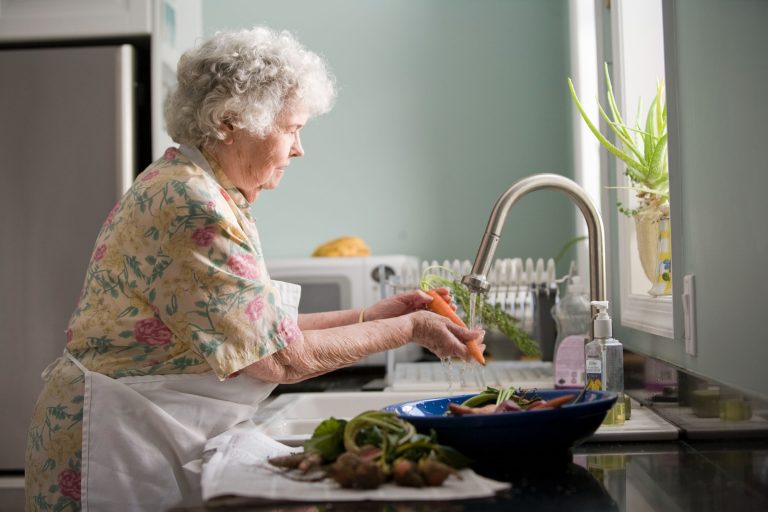In retirement many women find themselves financially dependent on their partner. The interaction between an unequal distribution of paid and unpaid work within many households and an earnings-based retirement income system tends to leave men in control of the majority of household retirement savings, and many women dependent on men. This poses significant risks both for older partnered women and for widows, and it demands an urgent policy response.
The economic security of older partnered women and widows is an increasingly important issue. Women are the majority of an expanding older community. In the 85+ age group there are now 3.8 times as many widows as widowers. Yet, policymakers continue to largely neglect the economic risks faced by this group.
The 2020 Women’s Economic Security Statement acknowledged that gender inequality in superannuation balance needs addressing with timid measures to address this gap through the superannuation system. Other policy prescriptions have focused on boosting women’s labour market earnings and, thus, their superannuation balances. However, the current needs of the many older partnered women and widows who have little to no capacity to engage in paid work and thus improve their own level of retirement savings continue to be left unaddressed.
Two broad approaches to protect economic outcomes for partnered older women in Australia’s superannuation-based retirement income system need to be considered: additional measures to enhance women’s capacity to influence decision-making on household superannuation wealth; and new measures to equalise the distribution of superannuation wealth within Australian households.
These measures need to be paired with additional support for the Age Pension, to ensure that its key role in providing economic security for older women is maintained.
1. Enhancing women’s capacity to influence decision-making on their partner’s superannuation assets
In the majority of cases, decisions around the use and management of superannuation assets lie with the member of the superannuation fund. In most superannuation funds, the member can in the accumulation phase (pre-retirement) determine the risk profile of their account and its insurance settings, nominate the beneficiaries of the account, and more. On retirement, they can choose to withdraw a lump sum, and/or decide how much, to transfer to a pension account (with the requirement that they withdraw a minimum annual pension from that account). If a pension or annuity is chosen, the selection of its term – and whose expected longevity it will cover – is also left with the member of the superannuation fund.
Each of these decisions has consequences not only for superannuation members themselves but also for those financially dependent on them. However, apart from the selection of beneficiaries, there is currently little regulatory oversight of whether the decisions that superannuation members make protect outcomes for their dependents. A limited example of regulatory oversight is the requirement that an insurance policy is formulated, reviewed and given effect.
Neither are there rights for partners to know about, or participate in, the decision-making process around superannuation assets. This is an important source of vulnerability for older partnered women and widows.
The potential to design and legislate for measures that will enhance the interests of dependent spouses in matters relating to retirement savings has been demonstrated by the United States Retirement Equity Act of 1984. This legislation regulated for transparency and control by spouses over at least part of their partner’s pension assets by stipulating that a spouse must provide written permission before survivor spouse benefits (included in their partner’s pension plan) could be waived. One pension reform proponent described the Act as recognising ‘marriage as a true partnership to which both spouses contribute and from which both should reap the rewards’. Others hailed the legislation as ‘explicitly’ meaning to ‘redistribute resources within the family’ for it made clear that a spouse has the right to benefit from their partner’s occupational pension.
Research on the impact of the Retirement Equity Act of 1984 suggested that by bringing spouses’ voices into these types of decisions resulted in higher levels of household life insurance and greater income security for widows. Acknowledging that the issues need to addressed with care, we argue that there is scope, and need, for policy measures that will improve the level of transparency of superannuation assets and decision-making within Australian households and help ensure that dependent partners have an ability to influence the decisions about superannuation that will affect their own retirement outcomes.
2. Capacity to influence who owns superannuation wealth
A different way to protect the interests of older partnered women and widows is to change the ownership structure of household superannuation assets.
A range of measures within the current superannuation allow for and, in some instances, incentivise the redistribution of superannuation assets within households. Employed members of superannuation funds can generally transfer concessional contributions from their own account to their spouse’s superannuation account. Spousal contribution under this provision are limited to 85 percent of concessional contributions in the previous tax year, up to the $25,000 concessional contributions cap. The recipient spouse must be below the preservation age. Once a member is over the age of 60 and has reached a condition of release, they can make non-concessional contributions of up to $300,000 every three years to a spouse aged under 65. The concessional taxation of contributions, combined with an annual contributions cap of $25,000 provides a financial incentive for some individuals to build the superannuation wealth of their spouse. A spouse offset provision also provides a tax offset to superannuation members who make non-concessional contributions to their spouses’ superannuation account.
Transfers of superannuation wealth within the household are also given some encouragement by the design of the Age Pension means test. In households where one partner is older than the other, the Age Pension payable to the older spouse can be increased by transferring superannuation assets to the younger spouse as these assets will be excluded from the application of the means tests if she/he has yet to retire.
However, these measures were not designed to provide for spouses or address intra-household inequality and their incidental effect on the economic security of older partnered women and widows is relatively weak. Critically, the benefits of these measures are skewed heavily towards high income/wealth households. Additionally, a number of other elements of the current tax structure, as well as the interaction between superannuation and the Age Pension means test, discourage the transfer of superannuation wealth within households. The relatively large tax breaks on superannuation contributions for high income earners, for example, make it advantageous in many Australian households for resources to be directed to building the superannuation balance of the male partner. The household income test on the Age Pension, together with its high taper rate, impose a high effective marginal tax rate on individuals who continue in paid work once their partner has retired.
Age pension is still fundamental even if transparency and equity in superannuation can be improved
Addressing the gaps in the default and regulatory settings of the superannuation system to improve transparency and enhance equity in superannuation assets and decision-making within the household would assist in reducing the economic vulnerability of partnered older women and widows. However, these measures need to be complemented with initiatives that address the fundamental structural barriers to gender equality generated by an earnings-based superannuation system built on generous taxation concessions that accords the most benefits to those on the highest incomes.
Buttressing the Age Pension pillar of the Australian retirement income system must be a key part of the policy response to the economic risks faced by partnered older Australian women and widows.
More details: Costa, M. et al (2020) Promoting and Protecting the Economic Outcomes of Older Partnered Women and Widows: Challenges for Australia’s Retirement Income System, Australian Tax Forum 35(2) pp. 213-231.
Other Budget Forum 2020 articles
Blink and You’ll Miss It: What the Budget Did for Working Mums, by Miranda Stewart.
Economic Stimulus through a Gender Lens: Why the Budget Did Not Deliver, by Helen Hodgson.
Progressivity and the Personal Income Tax Plan, by Sonali Walpola and Yuan Ping.
Training Subsidies and Market Failures, by John Freebairn.
Getting Coherence into the Equity Debate – Part 3, by Andrew Podger.
Getting Coherence into the Equity Debate – Part 2, by Andrew Podger.
Getting Coherence into the Equity Debate – Part 1, by Andrew Podger.
What Has Volunteering Got to Do With the Budget? By Sue Regan.
Talk of Aspiration Is Not Borne Out in Federal Budget Papers, by John Hewson.
Asymmetric Taxation of Business Income and Losses, by John Freebairn.
Heroic Assumptions in Budget Omit One Major Threat: A Global Debt Crunch, by John Hewson.
Dream Budget or Not? by Shumi Akhtar.
Will Instant Asset Write-Offs Boost Jobs? by Michael Coelli.
It’s Not the Size of the Budget Deficit That Counts; It’s How You Use It, by Steven Hamilton.
Looking for Bold Reform? Get Rid of Payroll Taxes, by Robert Breunig.
It’s Time to Meet Key Social Policy Challenges in COVID Recovery, by John Hewson.
Meet the Liveable Income Guarantee, a Budget-Ready Proposal That Would Prevent Unemployment Benefits Falling off a Cliff, by John Quiggin, Elise Klein and Troy Henderson.
COVID-19 Strengthens Australians’ Belief in the Fair Go, Government Should Support the Vulnerable, by Emma Dawson.








Recent Comments